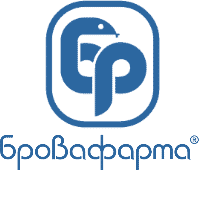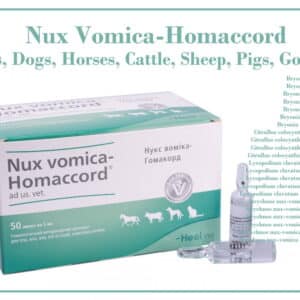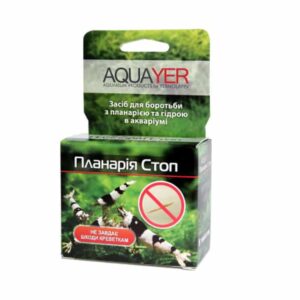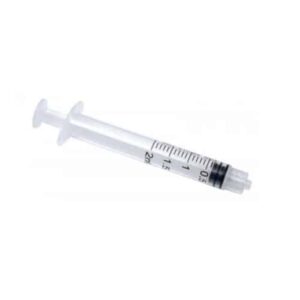– a drug having antiparasitic activity against a large number of helminths. Disastrously it affects adult forms and larval stages, which has the broadest spectrum of action among anthelmintic agents and is effective against most nematodes, tapeworms, and flukes.
Albendazole based drugs are used not only to treat people but also actively used in veterinary medicine. Used to treat such diseases in animals and birds as diktiokaulez, nematodirosis, bunostomosis, co-operiosis, ascariasis, and others.
Diseases caused by parasitic worms (helminths) people are known since antiquity. At present highly effective anthelmintic preparations are synthesized. Its function is low toxicity. Many of these drugs have a very important property – the versatility of action, ie act immediately in several parasites. One of the most interesting and effective anthelmintic drugs is
Albendazole belongs to the group of benzimidazole carbamate. Of this group of compounds, a well – known as mebendazole, also known as drug Vermox (vormin), it was synthesized. But nevertheless, Albendazole significantly exceeds mebendazole in both the efficiency and amplitude spectrum.
Albendazole is effective against most intestinal nematodes and (larval forms) cestodiasis larvae. Perhaps, for today there is an antiparasitic drug broad spectrum of action.
Mechanism of action.
Albendazole, other carbamate benzimidazoles, disrupts the function of the microtubules apparatus of the cell, causing damage to the protein tubulin. The consequence of this is the biochemical disorders in the cell – the suppression of glucose transport and fumarate reductase, underlying the suppression of cell division in the metaphase stage and which is associated with the oppression of oviposition and development of helminth larvae.
Albendazole is characterized by low absolute absorption. When absorbed, it becomes albendazole sulfoxide, which is present in plasma and tissues in high concentrations. It is this compound that ensures the high efficiency of the drug.
Albendazole tolerability was studied in experimental animals. It was found that the drug in doses of 25 mg/kg body weight and above inhibits leucopoiesis causing embryotoxic and teratogenic activity undisturbed postnatally. The reproductive capacity of males is not disturbed, nor are morphological changes in the testes. No toxic effects were found in Albendazole in other organs and systems. However, with prolonged use of high doses of the drug developed fatty degeneration of hepatocytes. It was found that the drug is not mutagenic. Based on the experimental data, the possibility of developing allergic reactions in animals with prolonged use of high doses of
Albendazole is established. Accumulation occurs moderately.
Albendazole is continuously absorbed (9.4 hours). The retention time of the drug in the body is 17.3 hours.
In the experiment, the efficacy of Albendazole was established for most intestinal nematodes and cestodes tissue and tissue. Therapeutic doses of the drug were much lower than toxic doses. This allowed us to recommend for practical use. Numerous clinical trials have confirmed high efficacy and good tolerability of Albendazole.
Remember that before the appointment of Albendazole, as well as any other anthelmintic preparation, you should carefully clean the room, washing children ‘s toys before going to bed and after a shower, and change your underwear. The bedding is recommended for treatment days and a few days after taking the medication iron with a hot iron.

Treatment of intestinal nematodes
Intestinal nematodes are represented by a large group of helminths, excretion of which has its own peculiarities, due to the peculiarities of the biology of parasites and the development cycle. Consider the most common of them.
Ascaridosis.
Pathogen – round Ascaris lumbricoides helminth parasites in the small intestine of a person. The difficulties in treating this helminthiasis are due to the fact that the parasite is cycled rather complex development in the human body, including the migration of helminth larvae throughout the body. Most drugs used to treat ascariasis are effective only in relation to intestinal helminths at this stage.
Albendazole is effective against all stages of parasite development.
Albendazole is prescribed at a dose of 400 mg per day once or in two divided doses. Special training and diet are required. Efficiency is 95-100%.
Trichocephalosis (withers head).
Pathogen Trichocephalus round Trichiurus is a helminth parasite in the human large intestine mainly in the region of the blind.
Albendazole – the most effective treatment drug trichocephalosis. The medicine is prescribed at a dose of 400 mg per day, once after eating. Special training and diet is required. Efficiency reaches 90%. In rare cases, the second course of treatment is required.
Enterobiasis (pinworm).
Pathogen – a parasite Enterobius vermicularis round. Parasitize a person in the lower portions of the thin and upper parts of the large intestine.
Albendazole is an excellent drug for the treatment of roundworms. It is enough to prescribe the drug at a dose/kg body weight 5 mg once. Without training, no diet is not required. After 14 days, the course of treatment must be repeated at the same dose and in the same regime. Efficiency is 100%.
Strongyloidiasis.
Pathogen – round Strongiloides Stercorarius helminth parasites in the small intestine of humans. The disease is common in regions with a warm and humid climate but also occurs in the middle lane, for example. Infection occurs when communicating with the ground: when working in the garden, walking barefoot on the floor, on the beach. In the body, the larvae migrate through the blood and lymph vessels, then sit on top of the small intestine and grow into adult individuals. helminths adults lay eggs, which hatch larvae in the intestine. These larvae can migrate throughout the body, causing a variety of allergic symptoms. If the patient is severely impaired immunity, Strongylid migration can take a long time, the number of migration increases larvae. All this can cause serious violations of many organs and systems.
Strongyloidiasis is particularly severe in patients with AIDS, as well as people taking immunosuppressant long. In these cases, from the common strongyloidiasis, lethal outcomes are possible. The treatment of strongyloidiasis is a difficult task. With the arrival of Albendazole, the situation has changed. Drug efficacy for the treatment of intestinal strongyloidiasis. Efficacy is 91 -100%
Preparation and diet for the appointment of Albendazole is not necessary. The medicine is prescribed at a dose of 10 mg/kg body weight once per three days. After a week, we recommend repeating the treatment cycle at the same doses.
Ankylostomidosis (twisted head).
The agents of this disease are round helminths duodenale and Necator americanus Ancylostoma. Helminths parasitize on the part duodenum and upper small intestine. Infection occurs through the skin, less frequently through the mouth with the ingestion of larvae. In these invasions, iron deficiency anemia develops.
Albendazole is highly effective in treating ancylostomiasis. Doses of the drug are the same as in the treatment of strongyloidiasis. With a one – day treatment, the efficiency is 85%, and an increase in the course of 2-3 days, increases.
Treating tissue nematodes
Trichinosis.
Trichinosis is known since ancient times and is one of the most severe human helminths. Infection occurs when meat infected with Trichinella, more often eat pork, but cases of infection bear, badger meat are not uncommon.
When larvae fall digested meat in the stomach, then with food into the small intestine, where they grow to adults, from which larvae appear. The larvae migrate to all organs but eventually settle in striated muscle, which curls into a spiral, wearing a capsule, in which calcium salts are deposited. Such larvae remain in the muscles for many years.
During the migration period, the larvae grow, change their shell several times (muda). Trichinella migration is very allergic. With the massive invasion serious lungs, heart, brain, immune nature to develop. With the intensive invasion and the lack of timely treatment, the disease often ends lethally. Larvae are extremely resistant to high temperatures, so the conventional cooking methods do not cause death in Trichinella.
While the parasite is in the small intestine (intestinal phase), virtually no drug antinematodic are effective. However, in-migration phases and muscle, most drugs are less effective or totally ineffective.
Albendazole is effective against all stages of Trichinella. There is no standard treatment for trichinosis regimes. The treatment is carried out individually, taking into account the time of the invasion, clinical manifestations, and severity of the patient’s condition.
Albendazole is prescribed at a dose of 10 mg/kg body weight per day (average dose of 800 mg per day) in 2 doses for 7-10 days. In case of severe invasion and organ damage (myocarditis, pneumonitis, meningoencephalitis), glucocorticoids and symptomatic agents are also prescribed.
Treatment efficiency is evaluated by the clinical, laboratory, and instrumental indicators (temperature normalization, cessation of muscle pain, the disappearance of edema, normalization of the electrocardiogram, the disappearance of physical and radiological signs of pulmonary disease, regression neurological symptoms, decreased blood eosinophilia, etc.)
Toxocariasis.
This is one of the most surprising and difficult to diagnose helminth infections in animals. Pathogen – Toxocara canis, a parasite of dogs. Infection of a person occurs from dogs through the mouth when eggs Toxocara contact soil particles contaminated with feces of infected dogs Toxocara. For toxocary people are random (atypical) hosts.
In humans, helminth parasites only in the larval stage, settling in the tissues of many organs, where migration refreshed periodically for many years.
Toxocariasis is most common in children aged 1.5-4 years. Adults get sick much less often. Risk groups are workers veterinarians, dog breeders, excavators, and community service workers who have frequent contact with the ground.
Toxocariasis occurs with severe allergy symptoms, obstructive syndrome develops, it is possible to form bronchial asthma, often the defeat of other organs.
Toxocarosal treatment is poorly developed. Greater efficiency was obtained with the use of albendazole. There are no standard treatment regimens for individual toxocariasis. Albendazole is prescribed at a dose of 10 mg/kg body weight per day in two divided doses for 10 days. One month – as a rule, repeated cycles of treatment with an interval of 2 weeks are required. Adverse reactions are rare, manifested by disorders of mild disability. An increase in the level of transaminases is extremely rare. During treatment, control peripheral blood (once every 5-7 days) and simultaneously minotransferases necessary.
Treatment tissue cestodes
echinococcosis Gadatidosis
The causative agent is the larval stage of Echinococcus granulosus tapeworm. Parasitically sexually mature in the intestines of dogs, dogs more often. Infection of a person occurs through the mouth when in contact with the dog as parasite eggs contact the contaminated soil particles with dog feces. In the stomach of eggs, larvae hatch, which migrate through the liver mesenteric vessels where most larvae settle. Here they grow, becoming a cyst. The larvae can enter the lungs, less often in other organs, and become a cyst. Tapeworm treatment is usually quick. Chemotherapy is carried out in cases of rupture of cysts and colonization of the body, in the postoperative period, when there is a risk of seeding if the integrity of the cyst is compromised during the surgery, and in cases of multiple lesions with small cysts (no more than 3-5 cm). Treatment is recommended against relapse after surgery when it is not possible to exclude the presence of other location’s tiny parasite size. Large cysts can not be treated because of inefficiency and the possibility of complications due to the disruption of the integrity of the cyst under the influence of drugs.
Albendazole – the most effective for the treatment of drug hydatid echinococcosis. Before the appointment of the drug requires clinical blood analysis, a biochemical examination of blood (liver-kidney complex). The treatment is carried out at normal laboratory parameters.
Albendazole is prescribed at a dose of 10 mg/kg body weight in 2 to 3 doses after a meal. The duration of the treatment cycle is 4 weeks. During treatment, blood and aminotransferases are examined every 5-7 days. With a decrease in white blood cells below 3.0 x 109 / L and an increase of 5-6 times the level of aminotransferase, it is necessary to suspend treatment until normalization or significant improvement in the indexes. In cases of progressive and hyprefermentemia leucopenia, drug withdrawal is required. The appointment of hepatoprotectives during treatment and in cases of toxic manifestations is ineffective, it is necessary to cancel the drug. Tapeworm treatment of various currencies. Albendazole designate courses at intervals of 2 weeks-one months.
Treatment efficacy was assessed by monitoring and surveillance dynamics title instrumental specific antibodies. With specific instructions correctly for prescription drugs and observation of dose and regimen of the treatment course, recovery is observed.
equinococosis alveolar
– serious, difficult to diagnose helminthiasis. It belongs to the group of natural focal diseases. Pathogen – Echinococcus multilocularis tapeworm larvae. helmintharasitizes sexually mature in the small intestine of dogs – dogs, foxes, wolves, etc. Infection occurs when dogs are taken care of , skins are treated when unwashed berries and wild herbs growing contaminated with feces from wild animals invaded enter their mouths. In humans, the parasite is always located in the liver, growing infiltrative, germinating in the tissues of the body vessels, bile ducts, can metastasize to other organs. Treatment of alveolar echinococcosis is operating. Chemotherapy is an additional resource. The most effective medicine for this is helminthiasis
Albendazole. The drug inhibits the growth of the pathogen without causing complete death. Doses of albendazole and its mode of administration are the same as for hydatid echinococcosis. The duration of the treatment course is determined by the patient’s condition and tolerability of the drug. Full recovery when used the only Albendazole does not occur.
cysticercosis
The causative agent is Cysticercus celluloses, the larval stage of the parasite tape pigtail. Infection occurs through the use of meat pig helminths invaded. An adult parasite develops from larvae tape in the human small intestine. In the segments of the helminth eggs there (oncospheres), which in some cases directly into the intestine develop into larvae. These larvae through the vessels carry various organs. Cysticercosis develops. Especially dangerous is the entrance of larvae in the brain and eyes. In this case, cysticercosis of the brain or ocular cysticercosis develops. Treatment of this helminth is difficult. Most antiparasitic agents are ineffective in cysticercosis. The greatest effect when set using albendazole.
Albendazole is prescribed at a dose of 15 mg/kg in three divided doses after meals. Course duration is 28-30 days. 2 days before taking the drug and in the first week (sometimes more), glucocorticosteroids (40-50 mg of prednisolone) are prescribed. Before treatment, for drug and end of the same control as in the treatment of echinococcosis.
In ocular cysticercosis, deworming is contraindicated because of the possibility of serious complications (retinal detachment) and the development of blindness.
Treatment efficacy of cysticercosis brain is controlled by the clinical parameters and results of X-ray CT of the brain and nuclear magnetic resonance. With effective treatment, foci disappear and / or calcified. It is often necessary to carry out repeated cycles of treatment. It must be remembered that even in cases of the good treatment effect of complete regression, no clinical symptoms may occur due to persistent structural changes in brain tissue formed.
Practice shows that Albendazole is a highly effective antiparasitic drug polyvalent action. Most existing helminthiases can be treated.
Here you can buy Albendazole powders and emulsions. Homelab has a large selection of different concentrations of the drug :
Albendazole (Albendahelm 500) 100 tabs
Albendazole (Albendahelm 500 Pro) 30 tabs
Albendazole (Albendahelm 360 Pro) 100 tabs
Albendazole (Albendahelm 360 Pro) 30 tabs
Albendazole (Albendahelm 250 Pet) 10 tabs















































